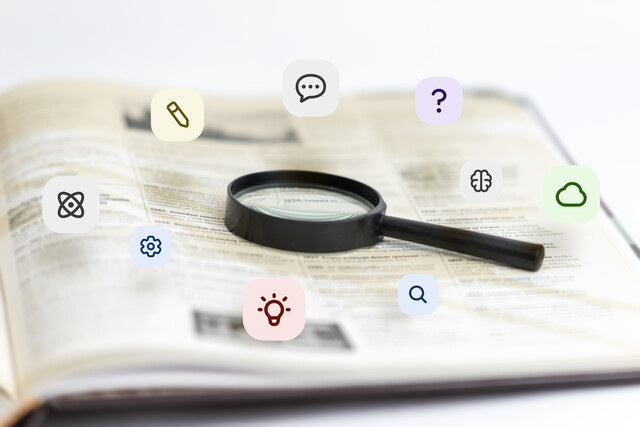Style Sheets and Other Copyediting Specialties
- A style sheet may let you know that the subject of your article prefers to go by the name Nick, rather than Nicolas.
- A style sheet reminds you that your editor wants you to use the style "apples, pears, and bananas" rather than "apples, pears and bananas", (notice that the first list has two commas and the second one has one comma).
|
Style sheets should be used for:
|
The style sheet will list the grammatical choices, characters, made-up words, unusual words, treatment of words, etc. and keep you consistent when making changes. If you do not have a style sheet, you could find that in some places you say "City of Los Angeles" while in other parts you say "city of Los Angeles"--this is not consistent and looks unprofessional when you are a copyeditor or writer.
Style sheets are very useful to proofreaders and copyeditors because they keep them from having to pay excessive attention to the consistencies in the writing. Instead, they simply match the information to the style sheet to find any problems. Style sheets can be created by the writer, but if they are not, then they are the responsibility of the copyeditor. Sometimes a copyeditor will be the one to create the style sheet, which he/she will then give to the writer. This is very common in magazine and newspaper copyediting, where the copyeditor wants the writers to follow a particular way of writing to ensure that things are consistent throughout the publication.
Style sheets also aid proofreaders and copyeditors when they are created by the writer because they help the writer get their point across. An example of this is if the writer specifically does not capitalize city names in their novel. The style sheet shows you as the proofreader that those city names are not supposed to be capitalized, and that helps keep you from editing things that should not be edited.
As the copyeditor, there are some things you should consider if you decide to put together a style sheet. These include:
- What you want capitalized. You may want proper nouns capitalized, as well as things like the names of books and films.
- How you want quotations used. Some editors want single quotations while others prefer double. You may want curly quotations rather than straight quotations and you may only want quotations in certain areas. Additionally, you could also require writers to use italics instead of quotation marks when dealing with quotes.
- Fonts are also something that you want to be consistent. This means that you could make a style sheet that only lists books, papers, films and plays in italics, while you make headings bold to ensure nothing else is bold. You may ask that there are no large fonts, and that you do not want any font size that is below point 10 point.
- Numbers are commonly a problem with copyediting, so a style sheet can help keep things consistent. Your style sheet may tell writers that you want them to spell out numbers below 10, or below 20, while you also want numbers that start a sentence to be spelled out. Another thing to consider is whether or not you want numbers to end in 'th' or 'st' in superscript or normal text. Some percentages are spelled out as 10%, 10 percent, or 10 per cent. A style sheet helps ensure you know exactly what you want out of your writers and they know what to write for you.
Creating a Style Sheet
When you create a style sheet, the first thing you need to do is to start reading the manuscript you are editing. When you come across a name or a place, you need to write it down. This way, when you come to that name or place again later on, you can compare the two and determine if they are the same or different. An example has been stated before with "City of Las Vegas" and "city of Las Vegas".
|
Once you have started reading, grab a chart, spreadsheet, or graph paper and write down the following on the side:
|
Now, as you read through the manuscript, begin making notes next to each heading so that you can keep track of any inconsistencies. You need to also write down everything that needs to remain consistent. While this is very time consuming, it is important to make sure the work is very consistent.
That is all there is to making a style sheet! You keep a log of the things that need to be consistent, and you write those items down. As you go through the literary work, you will find things that need to be changed and fixed, and then you can give that style sheet to the writer.
The Chicago Manual of Style
The style guide for American English is the Chicago Manual of Style, which was published for the first time by the University of Chicago Press in 1906. So far, 16 editions have been issued and it has proven to be invaluable to helping editors who need a style guide that keeps things consistent.
As was stated before, a copyeditor can work in a variety of industries, which come down to:
|
Other specialties to consider are whether or not you want to work within companies or work for yourself on a per project basis. You can choose to work per project, or per hour, with both having their own advantages.
Academic Papers
If you are editing academic papers, which can include journals, white papers and reports for universities, there are certain things to consider as an academic copyeditor.
|
Journalism/Non-Fiction
If you are editing journalism articles, you should consider the following as a journalism copyeditor.
|
Fiction
If you are editing short stories, novels and plays for writers, you should consider the following as a copyeditor.
|
Reports/Grants
If you are working for a company as a copyeditor, editing grants and business reports, then you should consider the following for this specialty.
|
Proofing Magazines and Newspapers
Magazine Copyediting
The magazine copyeditor will be the only person who reads the magazine from cover to cover, without skimming through it, before any customer would see it. This can be a very long job for a copyeditor, but it is vitally important for the magazine. Everything must be perfect in a magazine because if there are any problems it can mean lost business, and in some extreme cases, lawsuits.
|
The copyeditor must go through the magazine with a checklist looking at various parts of the magazine.
|
Things Copyeditors Monitor in Magazines
When a copyeditor is looking through a magazine, beyond what was just mentioned in the checklist, there are several things that a copyeditor will look for:
- The copyeditor must look at the style of the magazine to ensure that it follows the style guide of the magazine, as well as the Chicago Manual of Style. The style must be consistent throughout the magazine because any deviation will be picked up by readers and this looks unprofessional.
- Copyeditors need to find all the problems with punctuation, spelling, grammar and syntax to ensure that nothing is out of the ordinary within the articles. Spell-checkers on the computer can help, but they are not perfect and they will miss "typos" (words spelled correctly but used in the wrong context). This is why it is important for you to look through the magazine manually to find any problems.
- The copyeditor should go through the facts in the articles of the magazine to ensure everything is accurate. Statistics need to be double-checked, quotes need to be verified and the integrity of the article must be maintained. As a copyeditor, you will need to research what the writer researched to verify it is actually true.
- As the copyeditor, you need to ensure that the article is clear and concise, with all the proper information and nothing that could be deemed as "fluff".
The Step-by-Step Process
|
In order to edit the magazine properly, follow these steps:
|
Newspaper Copyediting
A lot of the information above can be used in newspaper copyediting, but there are some other things to consider. In order to copyedit a newspaper, follow these steps:
|
Finding A Newspaper Bias
One of the most important duties of a copyeditor is to ensure that the articles within a newspaper are not biased against one position. A newspaper article (not an opinion piece) must be completely unbiased and if you have biased articles, it can cost your readers your credibility. Follow these tips to find a bias in the newspaper:
- Take notes within the article to identify the "who", "what", "when", "where", "why" and "how". If there is any information missing in the article to balance it, make a note of it.
- Look to see if you could rewrite the article, using the same information, to create a different angle to the story.
- Analyze how the writer deals with the people they are writing about. This is based heavily on the words used. For example, are some people identified as "looting" in the article, while others are identified as "trying to find food"? Are some people "claiming" in the article, while others are "explaining"?
- Look at the tone of the article to determine if the information is balanced, or if the writer's opinion is getting into the article.
- If there are buzzwords in the article, it may be an indication that the article is biased.
- In the article, does the author label some people as a certain group and is this group not represented well in the article?
- Does the writer provide quotes and viewpoints from both sides of the issue?
- How are the people in pictures portrayed? If a group is vilified in an article and in pictures, it is a serious problem.
- Are the statistics that are in the article something that can be verified or do the statistics come from only one side of the parties in the article?




















